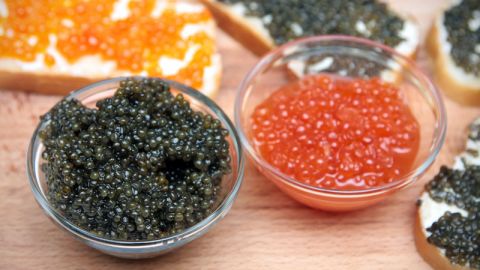The rich World of French cheese
2024-09-13 13:54:24
French cheese, with its rich history and diverse flavors, stands as a testament to the countrys culinary expertise. From the rolling hills of Normandy to the sunlit meadows of Provence, each region boasts its own unique cheese traditions, making France a true paradise for cheese lovers. Lets embark on a gastronomic journey through the fascinating world of French cheese.

The Origins and History
The history of French cheese is as diverse and flavorful as the cheeses themselves. Cheese-making in France dates back to ancient times, with evidence suggesting that the Gauls were making cheese as early as 500 BC. Over the centuries, French cheese has evolved, influenced by the monastic traditions of the Middle Ages, regional agricultural practices, and the innovation of individual cheesemakers.
By the time of the French Revolution, there were already hundreds of distinct types of cheese being produced across the country. The Industrial Revolution and the subsequent rise of modern dairy farming further expanded cheese production, making French cheese a beloved staple both domestically and internationally.
The Regions and Their Cheeses
France is home to over 1,200 varieties of cheese, often referred to as fromages in French. These cheeses are typically classified by their region of origin, each with its own unique characteristics. Here is a look at some of the most famous cheese-producing regions in France:
Normandy
Normandy, in the northwest of France, is renowned for its rich, creamy cheeses, thanks to the lush pastures and high-quality milk. The most famous Norman cheese is Camembert, a soft, creamy cheese with a distinctive white rind. Another notable cheese from this region is Pont-lEveque, which is slightly firmer than Camembert but equally creamy and flavorful.
Burgundy
Burgundy, known for its fine wines, also produces some exceptional cheeses. Epoisses, a pungent, washed-rind cheese, is a standout. Its strong aroma and bold flavor make it a favorite among cheese connoisseurs. Burgundy is also home to the lesser-known but equally delicious Abbaye de Citeaux, a Trappist cheese with a smooth, buttery texture.
Auvergne
The mountainous region of Auvergne is famous for its blue cheeses. Bleu dAuvergne, with its moist and crumbly texture, offers a sharp and tangy flavor profile. Another gem from this region is Saint-Nectaire, a semi-soft cheese with a creamy, earthy taste, often enjoyed with a glass of local wine.
Provence
In the sunny south of France, Provence offers a variety of goat cheeses, or chevres. Banon, wrapped in chestnut leaves and aged to perfection, is a delightful example. The region also produces Picodon, a small, round goat cheese with a firm texture and tangy flavor, perfect for a summer salad or a cheese platter.
Savoie
Nestled in the French Alps, Savoie is synonymous with hearty, mountain cheeses. Reblochon, a semi-soft cheese with a washed rind, is famous for its nutty flavor and creamy texture. This region is also home to Beaufort, often referred to as the Prince of Gruyeres, known for its firm texture and complex, fruity taste.
The Cheese-Making Process
The art of cheese-making is a meticulous process that combines science, tradition, and a touch of magic. It begins with high-quality milk, which can come from cows, goats, or sheep. The milk is then curdled using rennet, separating the curds from the whey. The curds are cut, drained, and often heated to encourage the release of more whey.
The next step is molding, where the curds are placed into molds to form the cheeses shape. Depending on the type of cheese, the curds may be pressed to remove excess whey. Salting follows, which enhances flavor and acts as a preservative. The cheese is then aged, or affined, in carefully controlled environments. During aging, the cheese develops its distinctive texture and flavor, influenced by factors such as temperature, humidity, and the presence of beneficial bacteria or molds.
The Cultural Significance
Cheese is more than just a food in France; it is a cultural icon. The French take great pride in their cheese, and it is an integral part of daily life. Cheese is often enjoyed as part of a meal, served with bread and wine, or as a dessert course. The traditional French cheese board, or plateau de fromage, is a common sight at dinner parties and gatherings.
The French even have a saying:Un repas sans fromage est comme une belle a qui il manque un oeil, which translates to A meal without cheese is like a beautiful woman with one eye. This proverb underscores the importance of cheese in French cuisine and culture.
Pairing French Cheese with Wine
One of the great pleasures of French cheese is pairing it with the perfect wine. The right pairing can elevate both the cheese and the wine, creating a harmonious balance of flavors. Here are a few classic pairings:
Camembert and Cider: The creamy texture and earthy flavor of Camembert pair beautifully with the crisp, refreshing taste of Normandy cider.
Epoisses and Burgundy: The strong, pungent flavor of Epoisses is complemented by the rich, full-bodied red wines of Burgundy.
Bleu dAuvergne and Sauternes: The sharp, tangy taste of Bleu dAuvergne is balanced by the sweet, honeyed notes of Sauternes, a dessert wine from Bordeaux.
Banon and Rose: The tangy, slightly herbal flavor of Banon pairs well with a dry, chilled rose from Provence.
French cheese is a world unto itself, offering a vast array of flavors, textures, and aromas. Each region brings its own unique contributions, creating a rich tapestry of cheese traditions that reflect the countrys diverse landscapes and cultural heritage. Whether you are a seasoned cheese connoisseur or a curious beginner, the world of French cheese invites you to explore, taste, and savor the artistry and passion behind every wheel, wedge, and slice. So next time you find yourself in front of a cheese counter, take a moment to appreciate the rich history and craftsmanship that goes into each piece of French cheese.












